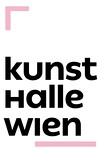 |
Manuš Means Human takes its title from the eponymous book (Manuš znamená člověk) by Vincent Danihel, a Czechoslovak communist politician of Romani origin, published in 1986. In his book, Danihel analyzes the historical development of the social status of the Roma and the policy of Roma integration in Czechoslovakia. Similarly, the exhibition traces policies through which socialist Czechoslovakia addressed structural causes of Roma exclusion, and situates these in wider historical context of the twentieth century.
But while it looks into the past, Manuš Means Human is strongly grounded in contemporary moment. Starting from the Chanov housing estate in the city of Most, considered to be the largest Roma settlement in Czech Republic, it puts the living conditions during the “totalitarian” regime of the past and the “liberal” regime of the present into sharp contrast. A different map of the second half of twentieth century emerges in the exhibition—one that deconstructs false narratives present in major contemporary media, which posit capitalist countries as technologically and socially advanced, and socialist countries as oppressive and joyless places in desperate need of catching up.
The exhibition explores the successes and shortcomings of socialist policies towards Roma integration in order to inspire us to look at socialist project again with sober eyes, as possible model of building equality that goes beyond identity politics. It puts together a picture—albeit a fragmentary one—of why the inclusion and cultural development of any marginalized population is impossible without social justice.
Manuš Means Human opens up a series of questions about the relationship between art and the material conditions of its production and presentation, and about the ways in which the constitutive narratives and origin stories of places, peoples, and nations are written. Through juxtaposing ethnographic, documentary, and artistic materials, it examines the role of art in creating cultural myths, the relation of art objects to remembrance and the interpretation of history, and the scope of a decidedly non-elitist and activist practice within the privileged space of the exhibition hall. It is an exhibition about the specific histories of the Roma, but by bringing to light different episodes and key events from the history of Romani emancipation, it touches upon, in the words of the Averklub Collective, “the desire for a dignified life common to all ordinary folk who are prevented from participating in decisions regarding their own fates”.
The Averklub Collective is a loosely organized group with no fixed structure. Its core is constituted by several residents of the Chanov housing estate, which is considered to be the largest Roma settlement in the Czech Republic. The collective expands and contracts as it sees fit, adapting with various configurations of artists, theorists, cultural workers and activists depending on current projects and needs. The activities of the Averklub Collective are strongly informed by the interconnectedness of cultural and activist work with art practice. Its members are František Nistor, Roman Šváb, Radek Šváb, Nikola Nistorová, Dana Bažová, Helena Pompová, Zuzana Cicková, Markéta Pařízková, Markéta Strnadová, Ladislava Gažiová, Jakub Jurásek, Zbyněk Baladrán, and Alexey Klyuykov.
Kunsthalle Wien
Museumsquartier, Museumsplatz 1
1070 Vienna
Austria
kunsthallewien.at
Facebook / Instagram / Twitter / YouTube / #AverklubCollective
|
 |

![[1] Chanov housing estate, 1980s. From the archive of Helena Nistorová. [2] Yugoslavian Romani flag mockup, 1971. [3] Rozana Kuburovič, The First World Romani Congress, 1971. Courtesy of the artist. [4] Chanov housing estate document. Courtesy of Archives of the Building Authority, Most City Hall. Photo: Averklub Collective. [5] Jan Bartoš, Diggers, 1999. Courtesy of Museum of Romani Culture, Brno. [6] Rozana Kuburovič, Romani Flag, 1971. Courtesy of private collection.](/image/2021/5/27/368556_caa3702c69586825824dc4945b4ae4ff_gif_2000.gif%282400x%29%28375421D0EDBEE221ED0EA83DA05F266F%29.gif)
